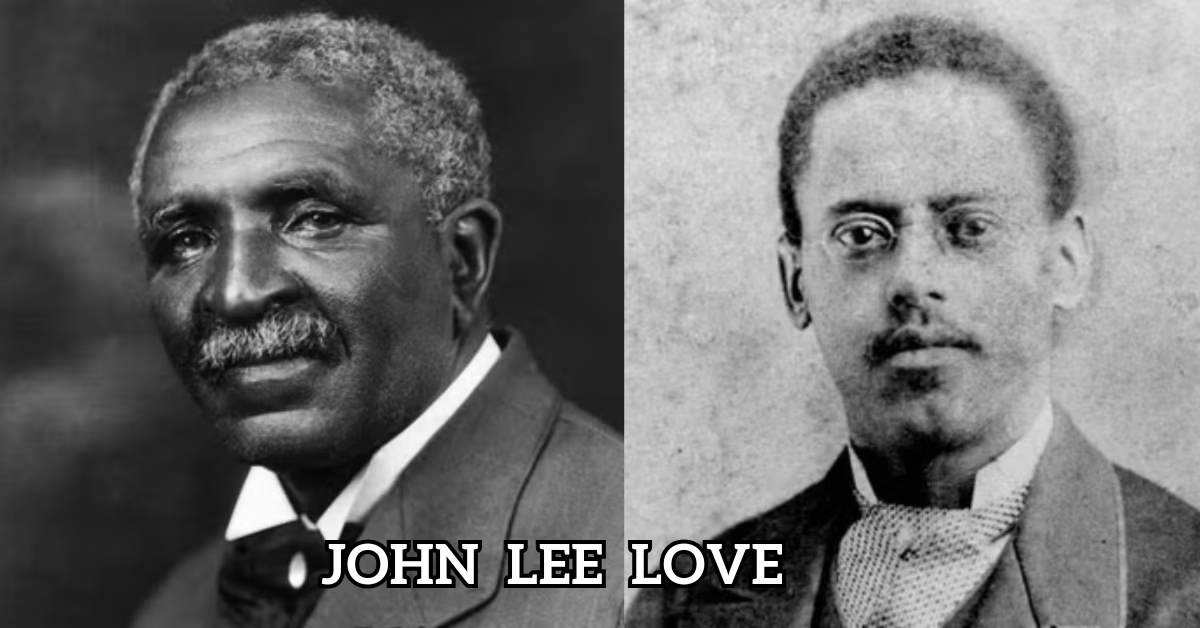Have you ever wondered who made the first hand-held pencil sharpener? It was John Lee Love. He was a clever African American inventor who lived long ago.
Many people do not know his name. He is one of the overlooked inventors and unsung inventors in America.
This article will show you his life. You will learn about the tools he made, the patents he got, and the problems he faced as an inventor. You will also see why his inventions still matter today.
Quick Biography of John Lee Love
| Category | Details |
|---|---|
| Full Name | John Lee Love |
| Born | 1860s–1870s (exact date unknown) |
| Birthplace | Likely in the United States |
| Profession | Carpenter and Inventor |
| Major Inventions | Plasterer’s Hawk, Hand-Cranked Pencil Sharpener (Love Sharpener) |
| Patent Dates | Plasterer’s Hawk – 1895 (U.S. Patent No. 542,419)Love Sharpener – 1897 (U.S. Patent No. 594,114) |
| Innovations | Detachable handle, foldable board, portable pencil sharpener design |
| Challenges | African American inventor in 19th-century America faced racial discrimination and limited recognition |
| Legacy | Inspired modern portable sharpeners and school supplies; early example of innovative African Americans in tool design |
Early Life and Background
John Lee Love was born a long time ago, but we do not know the exact date. Some records say he might have been born in the 1860s or 1870s. His family and childhood are mostly a mystery because few papers exist about him.
He grew up in a time when life was very hard for African Americans. Many people had to work a lot and could not go to school easily. Even with these challenges, John Lee Love liked to watch how things were made. He loved tools and wanted to make them better.
He lived in Fall River, Massachusetts, where he worked with wood and metal. These early experiences helped him think like one of the black inventors in America who used their skills to create helpful tools. He learned to fix and build things, which later made him one of the clever carpenter inventors in history.
Career as a Carpenter and Inventor
As a young man, John Lee Love became a carpenter in Fall River, Massachusetts. He worked with wood and metal every day. This job helped him learn how tools work and how to make them better.
He was curious and tried new ideas. He made small inventions and tested them before getting patents. This shows why he is one of the inventive African Americans who solved real problems.
During the 19th century, life was hard for black inventors. Many people did not give them credit, even for good ideas. John Lee Love had to work very hard to get attention for his inventions. He was like many 19th century inventors who had to keep trying and fixing problems.
He also thought like a modern American tool designer. He wanted tools to be easier to use, safer, and helpful for workers. His smart thinking made him a creative problem-solving inventor, even though most people at the time did not notice his talent.
Invention 1: Plasterer’s Hawk
A plasterer’s hawk is a flat board with a handle. Workers use it to hold plaster while they spread it on walls. Before John Lee Love, the hawk was heavy and hard to carry.
Love made it better. He added a detachable handle and a foldable board. This made it lighter and easier to use. He got a patent for this tool in 1895 (U.S. Patent No. 542,419). It was one of his first successful inventions.
Plasterer’s Hawk Comparison
| Feature | Original Tool | Love’s Improvement | Benefit |
|---|---|---|---|
| Handle | Fixed | Detachable | Easier to carry |
| Board | Heavy | Foldable / aluminum | Lightweight, portable |
| Usage | Single worker | More versatile | Efficient |
This improved tool helped workers do their jobs faster and easier. It also shows how John Lee Love made practical inventions in the 19th century. He solved problems that many people did not even notice.
Invention 2: Hand-Cranked Pencil Sharpener (Love Sharpener)
In the 1890s, schools and offices needed better tools to sharpen pencils. John Lee Love saw this problem and invented a hand-cranked pencil sharpener. His design was small and easy to use. It could sit on a desk or be carried from place to place. This made it one of the first portable pencil sharpener designs.
Love got a patent for it on November 23, 1897 (U.S. Patent No. 594,114). His idea collected pencil shavings safely and kept desks clean. You turned a handle to sharpen pencils. Before this, people had to use knives or simple sharpeners that made a mess.
His early pencil sharpener innovation was clever. It was safer and faster than older tools. Children and office workers could use it without hurting themselves. This was an important step in mechanical pencil sharpener evolution.
Love Sharpener vs. Modern Sharpener
| Feature | Love Sharpener | Modern Sharpener | Notes |
|---|---|---|---|
| Portability | High | High | Inspired modern design |
| Ease of use | Medium | High | Hand-crank vs. electric |
| Safety | Medium | High | Shavings containment |
| Durability | Medium | Medium | Metal parts vs. plastic |
The Love Sharpener shows how hand-held sharpening devices can be both useful and smart. It also became a popular school supplies invention, inspiring modern tools we still use today.
Historical and Social Context
John Lee Love lived in a time when life was very unfair for African Americans. Many inventors like him worked hard but were not recognized. This is why he is one of the unsung inventors in America.
Even though his tools were smart, people often ignored black inventors in America. They did not get the same opportunities to sell their inventions or get credit.
Love was not alone. Many 19th century American inventions came from people who faced challenges because of race. Others, like Lewis Latimer or Elijah McCoy, also had to fight for recognition.
His inventions, like the Love Sharpener, helped schools and offices. They also showed that African Americans could be great inventors. This story links his work to a larger history of tools, education, and creativity.
Patents and Legacy
John Lee Love had at least two important patents. The first was for the plasterer’s hawk, and the second was the hand-cranked pencil sharpener. These are some of the early American patents held by African Americans in the 1890s.
Getting patents was not easy. Many black inventors faced discrimination. Some had to fight just to register their ideas.
Love’s inventions helped workers, students, and schools. His tools inspired later designs and still influence modern sharpeners. Even though he is not famous, his work is an important part of tool innovation history.
Some challenges remained. His designs were not always mass-produced, and history did not record much about him. Still, his ideas live on in everyday objects we use today.
Did His Inventions Have Issues?
Love’s inventions were clever, but they were not perfect. The original Love Sharpener could be a little hard to turn. Metal parts could wear out over time.
Compared to modern sharpeners, it was less safe and less easy to use. The plasterer’s hawk worked well but was heavy for some workers.
These issues were normal for practical inventions in the 19th century. John Lee Love was a creative problem-solving inventor. His tools solved real problems, even if later improvements made them better.
Also Read: Mia Bieniemy: Quiet Strength Behind NFL Star Eric Bieniemy
Modern Relevance and Applications
John Lee Love’s inventions are still useful today. His hand-cranked pencil sharpener inspired modern pencils tools used in schools. Children and students use sharpeners that work fast and safely.
The idea of early portable tools helped designers make pencils, rulers, and other school supplies easy to carry. His sharpener shows the start of innovation in writing tools.
Kids can learn from his designs. They see how small ideas solve big problems. Love’s work encourages curiosity. Students can explore, build, and imagine new tools. His inventions were more than tools—they were lessons in creativity and problem-solving.
You May Also Like: Secrets Behind Justin Billingsley Connecticut’s Success
Conclusion
John Lee Love was a clever African American inventor. He made tools that helped workers and students. From the plasterer’s hawk to the hand-cranked pencil sharpener, his ideas were practical and smart.
Even though he is one of the overlooked inventors and unsung inventors in America, his work still matters. Modern school tools and portable designs owe much to his creativity.
We should remember and celebrate inventive African Americans like John Lee Love. Their inventions shaped the world quietly but powerfully. Learning about them helps children and adults see that smart ideas can come from anyone.
FAQ Section
Who was John Lee Love?
John Lee Love was a clever African American inventor. He lived in the late 1800s and made tools that helped workers and students.
What did John Lee Love invent?
He invented the plasterer’s hawk and the hand-cranked pencil sharpener, also called the Love Sharpener.
When did he patent the pencil sharpener?
He got a patent on November 23, 1897 (U.S. Patent No. 594,114).
Why is John Lee Love not widely known?
Many African American inventors were ignored in the 19th century. His work was smart, but history did not record much about him.
Are his inventions still used today?
Yes! Modern portable sharpeners and school supplies follow the ideas from his early pencil sharpener innovation.

Shazny plays a key role behind the scenes, reviewing and refining content before it goes live. With a strong eye for detail, Shazny ensures that every article meets high standards of clarity, accuracy, and trustworthiness. From grammar checks to fact verification, Shazny helps maintain the quality and credibility of everything published on TryHardGuides.
Discover more from Try Hard Guides
Subscribe to get the latest posts sent to your email.

